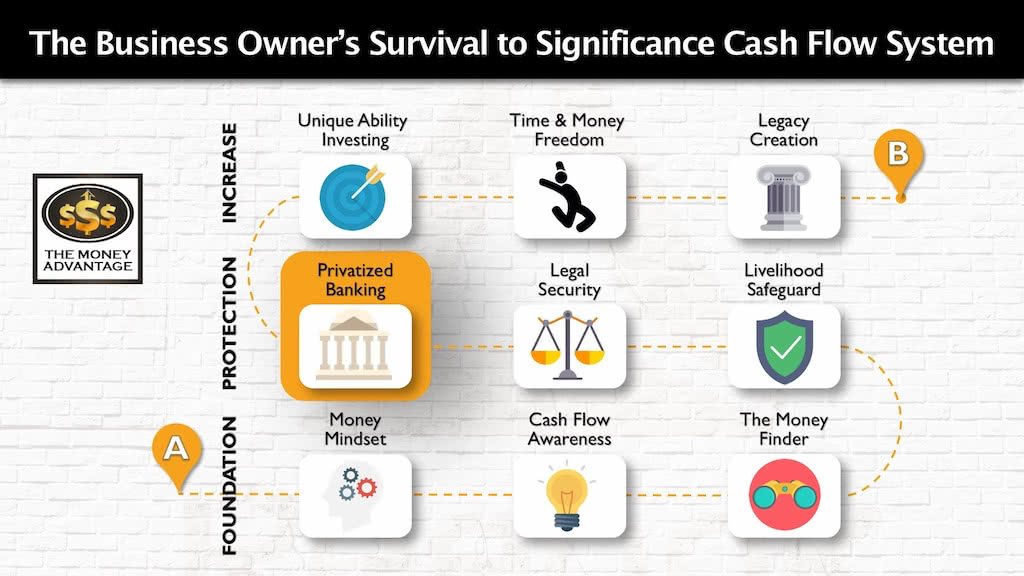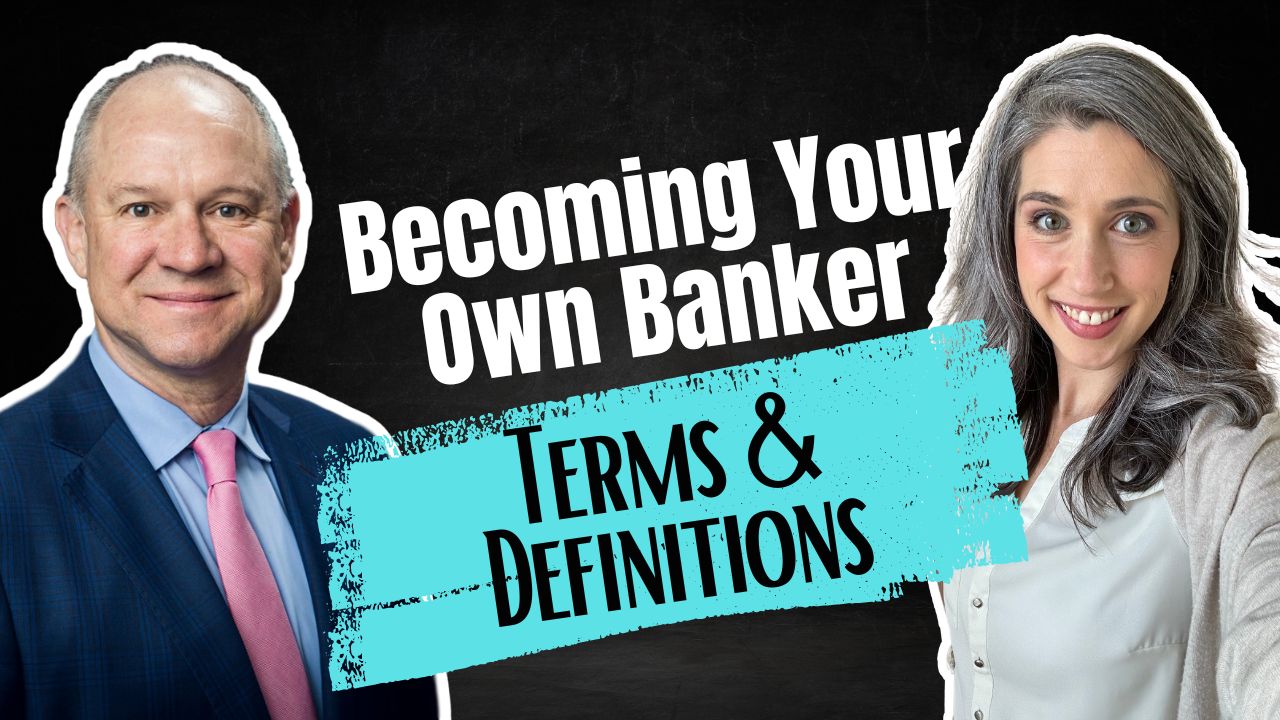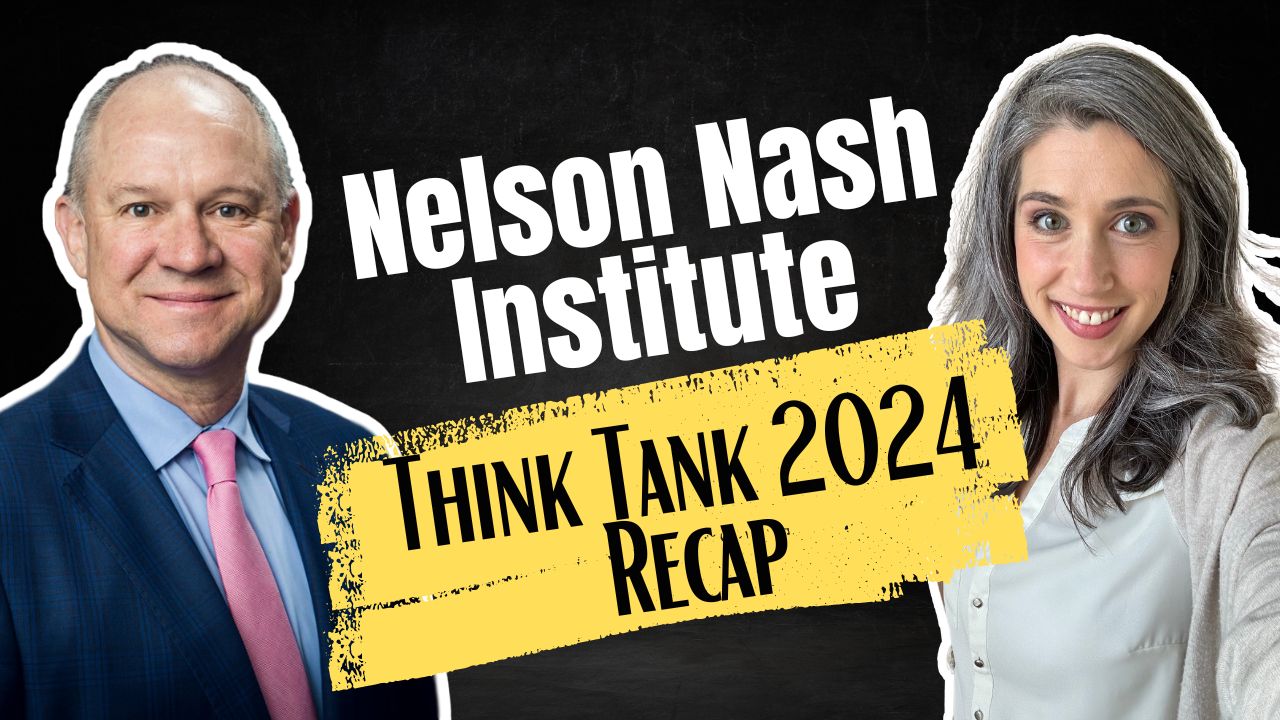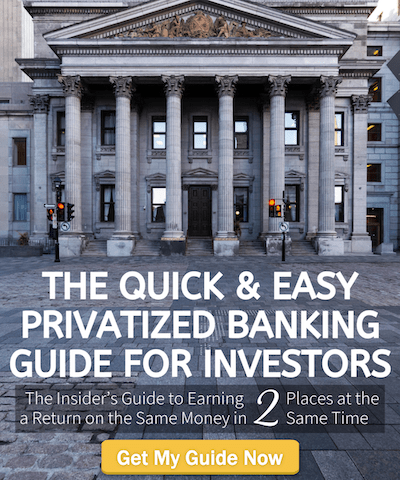
How to Take a Whole Life Policy Loan and Pay It Back
Infinite Banking has the edge over other funding methods because of the strategic use of whole life policy loans.
If you’re new to the concept, let’s rewind to make sure we’re on the same page.
Infinite Banking is a strategy of building up cash value inside of a specially designed whole life insurance policy. The cash value is a place to store cash that provides safety (your cash value won’t drop in value), growth (with guaranteed interest, plus non-guaranteed dividends), and liquidity (contractual access to use your money.)
Podcast: Play in new window | Download (Duration: 30:11 — 34.5MB)
Subscribe: Apple Podcasts | Spotify | Android | Pandora | RSS | More
When you want to access your cash value, rather than depleting your cash value by using it directly, you convert it to cash by borrowing against it. That means you don’t use your cash value; you collateralize it and use OPM (other people’s money) instead.
So, all of your cash value continues growing and compounding, even with an outstanding loan. This is why you can earn a return on the same money in two places at the same time.
Find out more about life insurance policy loans and why we use them here.
Today, we’ll dig into the process of how to take a life insurance loan and pay it back. We’ll de-mystify policy loans by talking you through the steps you’d take to move capital into usable cash in your bank account. And you’ll gain the confidence to use your policy to the fullest capacity to maximize all of your money.
Table of contents
Where Do Whole Life Policy Loans Fit into the Cash Flow System?
Loans are one small part of Privatized Banking, which is, itself, another step in a bigger journey to time and money freedom.
That’s why we’ve developed the 3-step Business Owner’s Cash Flow System as your roadmap to go from just surviving, to a life of significance, purpose, and financial freedom.
The first stage is the foundation. You first keep more of the money you make by fixing money leaks, becoming more efficient and profitable.
Then, you protect your money with insurance and legal protection and Privatized Banking.
Finally, you put your money to work, increasing your income with cash-flowing assets.
Whole Life Insurance’s Three Rates of Return
The power of whole life insurance comes from the three distinct returns it gives you: an internal return, an external return, and an eternal return.
The internal return is the growth of your money through interest and dividends inside the policy.
The external return is the growth on the outside investments when you put your cash value to work in other assets with policy loans, a process known as Infinite Banking.
And the eternal return is the death benefit that provides an ongoing legacy to your loved ones.
The Reason to Use a Whole Life Policy Loan: Control
You capitalize on the external returns by using policy loans as a funding source.
Using a whole life insurance loan boils down to one thing: control.
You have control because you have the guaranteed privilege of accessing cash up to the amount of your available cash value. That means you don’t need to meet any terms or qualifications. You don’t need to prove you can repay. There’s no credit check or scrutiny on what you’re using the money for.
So, it’s not a wait-and-see if you’ll get the money. If you request the loan, it’s yours.
Another layer of your control comes from the contractual right to control the terms of how and when you pay back the loan.
Because of this substantial control you gain from using and repaying policy loans, we want it to be as easy as possible for you. To do that, we’ll answer your most pressing questions about using policy loans.
The Process of Taking and Repaying Whole Life Policy Loans
How Do You Request a Loan?
You can request a loan on your own by completing the request through your carrier’s website.
Or, for our clients, we recommend calling us to use our concierge service. Going through your advisor ensures all the steps are completed correctly, and the process goes smoothly.
You’ll sign two documents: one to take the loan, and the second for EFT to have the loan directly deposited to your bank account. While you can have a check physically mailed to you, EFT is quicker and requires fewer steps on your part.
Usually, the carrier tells you to expect the deposit in about 5 – 7 days from the date of the loan request, but it can often be quicker.
When you work with your advisor to request a loan, you can also discuss and arrange the ideal repayment strategy for your situation.
What Happens to Cash Value with an Outstanding Loan?
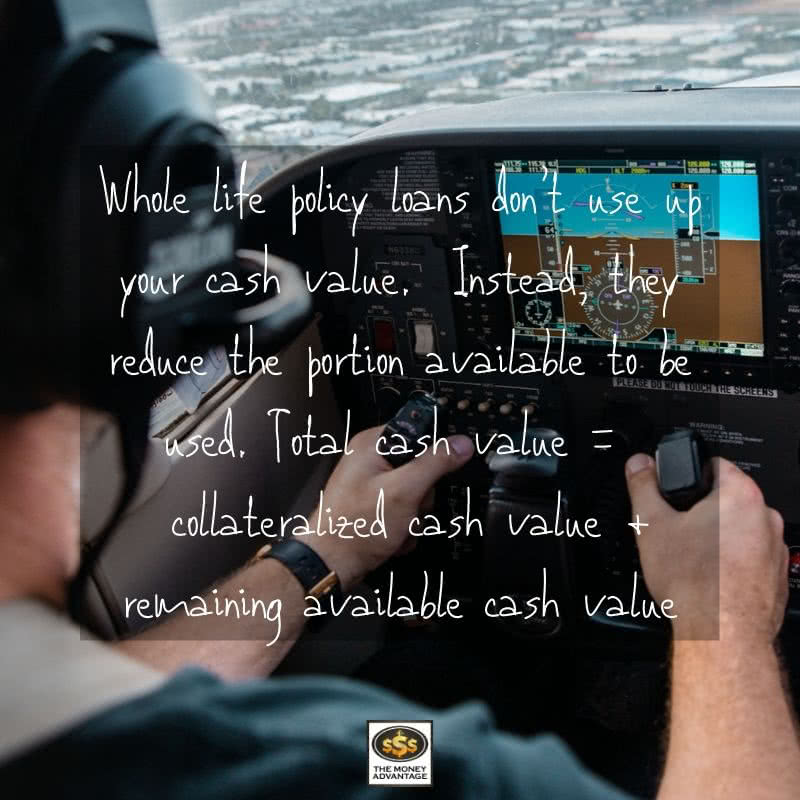
Loans don’t use up your cash value. Instead, they reduce the portion available to be used.
You could think of it like this: total cash value = collateralized cash value + remaining available cash value.
With a greater loan amount, you have less remaining available cash value, but there’s no impact on your total cash value.
That’s because when you take a policy loan, the life insurance company gives you capital from their general reserve account. They place a lien against the portion of your cash value to collateralize the loan. That portion of cash value is now not available to be used again until you’ve paid back that portion of the loan.
As you repay the loan, you release the lien and convert that portion back into usable cash value.
How Does Interest Accrue During a Whole Life Policy Loan?
Whole life policy loans have a cost. That cost is the interest you pay to the life insurance company for the use of their money.
Interest on your whole life insurance loan charges at the end of the year.
Interest will be either in advance or amortized.
If it’s advance, the rate is usually lower, but you’ll pay all the interest for that year, even if you pay off the loan early. However, some carriers will credit you back if you pay early.
With amortizing interest, the rate on your loan will be a little higher, but you’ll only pay the prorated amount of interest for the portion of the year that you had an outstanding loan. That means if you pay off the loan three months early, you’ll only pay interest for nine months instead of the full 12 months.
Usually, loan repayments first cover the principal. That means that if you repay $1,000 on a loan, the payments free up the lien so that your available cash value rises instead of first covering interest only.
How Do You Repay a Policy Loan?
We recommend always having a strategic loan repayment plan, whether you set up your repayment schedule over one year, five years, or anything else. You could make interest-only payments upfront, and then repay the balance at a later date. Or you could pay nothing at first, and then pay it off all at once. You could make monthly or annual payments. And you can mail in a check, or have automatic payments drafted from your bank account.
And even after you set up your repayment plan, you have the flexibility to make changes if you want to pay more or less than planned.
Your advisor can also talk you through the best method and timing for repaying the loan.
What If You Don’t Pay Off a Policy Loan?
Even though you set up a repayment schedule for your loan, you still have complete flexibility.
If you decide not to make payments, interest will continue to accrue and be added to the balance of the loan. This will further reduce your available cash value, even though your total cash value will not be impacted.
You could think of your available cash value as a bubble (portion) at the top of your cash value.
Your total cash value will continue to rise through interest and dividends. If the interest on your outstanding loan is less than your total cash value growth, your available cash value will continue to increase. The bubble will be pushed higher and may even expand.
However, if the loan interest on an outstanding loan is rising faster than the overall cash value growth, it could eat up all the available cash value and collapse the policy. In this case, the bubble would shrink or even pop. This situation would occur if you took out a maximum policy loan (almost 100% of your available cash value) and did not repay it.
Why Earning Interest Is Better Than Paying Yourself Interest
There’s a common misunderstanding when it comes to paying interest on a whole life policy loan. Some people think that when you pay interest on the loan, you’re paying yourself interest. That is not true.
The reason is that if you are max funding a policy, there is no room to put in additional cash to “pay yourself interest.” The only way to put in more cash would be if you had been paying only a portion of your paid up additions and wanted to pay more PUAs.
When you repay a policy loan, you are paying interest to the life insurance company. Now, because profits are returned to policyholders in the form of a dividend, you will indirectly reap the rewards through future dividends. However, the interest you pay is not going straight into your cash value, so you’re not paying yourself interest.
However, whole life policy loans do have a unique leverage point in that they provide you the opportunity to earn interest while you pay interest.
Allow me to explain:
You will always pay interest to use money because all capital has a cost. You’ll either pay interest to use someone else’s money, or you’ll give up the ability to earn interest if you use your own (opportunity cost).
You can learn more about the cost of capital in our article about Economic Value Added.
Borrowing against your life insurance policy doesn’t get around this cost. You’ll still pay interest on the policy loan.
However, the unique advantage is that, while you’re paying interest, you still get to earn interest at the same time, because your policy continues growing with interest and dividends.
This puts you in a position of a steward and wealth creator, who’s able to model the bank by controlling capital.
Start Using Whole Life Policy Loans for Infinite Banking Today
If you would like to utilize an existing policy to the fullest and have questions about taking and repaying loans, we can help you.
To personally implement Privatized Banking, discover cash flow strategies to keep more of the money you’re making, or locate alternative investments, book a Strategy Call.
You’ll find out the one thing that you need to be doing right now to accelerate your path to financial freedom.
Success leaves clues. Model the successful few, not the crowd, and build a life and business you love.
Becoming Your Own Banker, Part 28: Infinite Banking Definitions
Have you ever felt like you’re on a financial hamster wheel, constantly spinning but never gaining traction? Join us as we unpack the epilogue and glossary of Nelson Nash’s “Becoming Your Own Banker.” It’s a journey through the intricate philosophy of IBC, as we cover Infinite Banking definitions that shows how effective money management can…
Read MoreNelson Nash’s Legacy: Think Tank 2024 Recap
Embark on a transformative financial odyssey with us as we reflect on our profound experiences at the Nelson Nash Think Tank for 2024. Unlock the doors to personal economic empowerment with the Infinite Banking Concept (IBC), a brainchild of the late Nelson Nash that revolutionizes the use of dividend-paying whole life insurance. We shed light…
Read More
